 History
History  History
History  Weird Stuff
Weird Stuff 10 Superstitious Beliefs That Once Consumed Entire Cultures
 History
History 10 Bizarre Friendly Fire Incidents in Military History
 Technology
Technology 10 Modern Technologies That Accidentally Imitate Ancient Magic
 Mysteries
Mysteries 10 Mysteries of the Human Genome
 Weird Stuff
Weird Stuff 10 Things So Rare They’ve Only Been Found Once
 History
History 10 Legends Whose Last Moments Undid Their Glory
 Health
Health 10 Futuristic Ideas to Treat Common Medical Problems
 Weird Stuff
Weird Stuff Ten Surreal Attempts to Reverse Baldness
 Facts
Facts 10 U.S. Government Contingency Plans for the Unthinkable
 History
History 10 Odd Things Colonial Americans Kept at Home
 Weird Stuff
Weird Stuff 10 Superstitious Beliefs That Once Consumed Entire Cultures
 History
History 10 Bizarre Friendly Fire Incidents in Military History
Who's Behind Listverse?

Jamie Frater
Head Editor
Jamie founded Listverse due to an insatiable desire to share fascinating, obscure, and bizarre facts. He has been a guest speaker on numerous national radio and television stations and is a five time published author.
More About Us Technology
Technology 10 Modern Technologies That Accidentally Imitate Ancient Magic
 Mysteries
Mysteries 10 Mysteries of the Human Genome
 Weird Stuff
Weird Stuff 10 Things So Rare They’ve Only Been Found Once
 History
History 10 Legends Whose Last Moments Undid Their Glory
 Health
Health 10 Futuristic Ideas to Treat Common Medical Problems
 Weird Stuff
Weird Stuff Ten Surreal Attempts to Reverse Baldness
 Facts
Facts 10 U.S. Government Contingency Plans for the Unthinkable
10 Places Where Dangerous Animals Live Alongside Humans
Snakes, sharks, polar bears, leopards—these are probably not animals you’d normally want to get close to. Yet, there are people in some parts of the world who think nothing of having some of the most feared animals in the world sitting on their porch.
Amazingly, simple interventions allow this to work out just fine most of the time. Perhaps humanity doesn’t need to be so nervous about its wild cousins after all.
10 Leopards In Mumbai

If somebody mentions leopards, your mind probably takes you to a wild jungle where these impressive cats prowl alone. So it might come as a surprise that a heavily populated city in India has more leopards in it than the nearby forests.
At least 35 leopards have been counted in the area surrounding the Sanjay Gandhi National Park in the middle of Mumbai. The density of the leopard population implies that they may be changing their behavior from a solitary lifestyle to a more group-oriented way of life. Could there one day be “prides” of leopards just like lions?
These “urban leopards” haven’t always lived in harmony with the residents. But since schemes were employed to manage any incidents of human-leopard conflict, the likelihood of being eaten by one of these enigmatic creatures has become minimal. The leopards seem to love the city and provide a waste disposal service, eating the carcasses of old cattle that die in the city’s farms.[1]
9 Polar Bears In Hudson Bay

A former military base, the town of Churchill on the shore of Hudson Bay, Canada, is one of the few places in the world where people are outnumbered by polar bears. During the winter months, the migrating bears frequently walk through the town and not always peaceably. After a few people experienced some encounters with the bears that were a little too close for comfort, a group was set up called the Polar Bear Alert Program.
In any situation where there may be a risk of polar bears injuring or being injured by humans, the organization intervenes and deters the bears from the area without causing them harm. Sometimes, however, a bear may persist in getting involved with people. This is not safe for anyone, including the bears, so they have to be taken to “polar bear jail.”[2]
There, the bears stay in a holding facility until the sea ice that they rely on to catch seals begins to freeze over again. Then the bears are moved back into their land of icebergs.
8 Brown Bears In Turkey
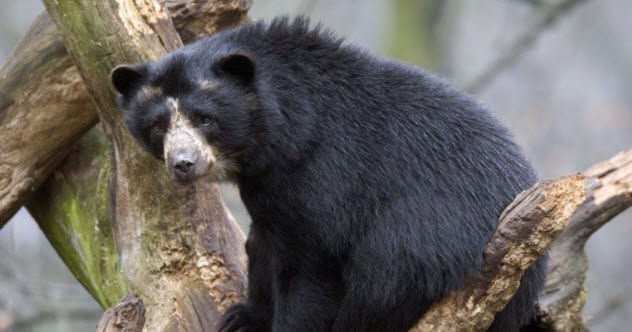
In Rize in northern Turkey, the population of brown bears was causing problems with beekeepers by eating all the honey from the hives. Instead of trying to remove the bears, the local community worked around this by creating hives in places that were difficult for the bears to reach, such as gaps high up in cliffs or rock crevices.
This inspired some researchers to build a kind of beehive that would be bear-proof. They came up with a platform supported by poles that would make it hard for the bears to get into the hive. That way, beekeepers across Turkey and even other countries could keep their honeybees and their honey without worrying about bear interference.[3]
It’s a great example of how harmony, rather than harm, can benefit both humans and animals so much that they can live together without trouble.
7 Hippos In Zimbabwe
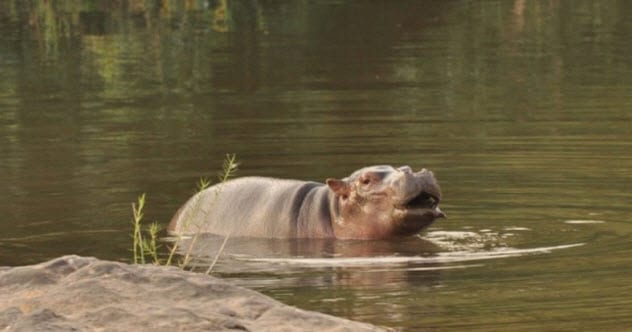
The hippo is potentially one of the most dangerous animals in Africa with its huge jaws and complex social rules that can easily be breached by a human outsider. This didn’t put off Karen Paolillo from getting to know a group of hippos and dedicating her life to them, however.
She and her husband withstood a terrible drought, local political unrest, and the remote, harsh environment of rural Zimbabwe to create sanctuary for the Turgwe hippo population. To this day, they work tirelessly to dig wallows for the hippos, deter poachers, and even feed the hippos during times of scarcity. Without these dedicated people, the hippos almost certainly would not have survived and thrived.[4]
Paolillo writes about her experiences—from being charged at by hippos and having to escape up a tree to the characters of the individual hippos whom she supervises without interfering with their wild nature. Her work shows that it is possible to maintain a balance of caring for wildlife and respecting boundaries.
6 Rattlesnakes In Connecticut
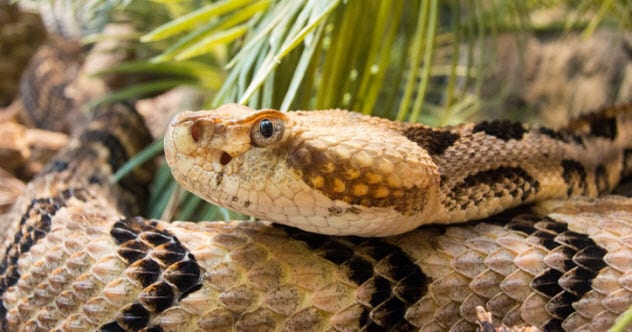
The last thing you might expect of the rattlesnake is that it might become extinct. However, rattlesnakes are actually an endangered species. Most people prefer to kill the snakes on sight rather than worry about them slithering around and possibly biting their children and pets. So rattlesnakes don’t have the best chance of maintaining their numbers.
However, in Glastonbury, Connecticut, pioneering snake lovers Doug Fraser and William Ripple began a campaign to save the rattlesnake. By educating local people and setting up systems to resolve rattlesnake incidents, they managed to persuade the residents of Glastonbury to welcome the snakes and even create a dedicated reserve for them.
Now, Glastonbury is one of the few places that can boast of living in harmony with rattlesnakes.[5]
5 Tigers In Mohnapur
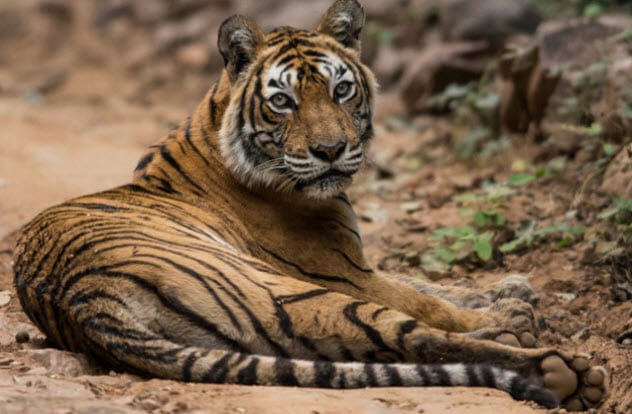
If urban leopards weren’t enough, India is also home to a few urban tigers. Many of the villages where tigers decide to take up residence, such as Mohnapur, have little protection from the possible threat of a tiger attack. However, the villagers don’t seem to begrudge the enormous felines. Instead, the people are thankful for the animals.[6]
This is because the chance of getting injured or killed by a tiger is still highly unlikely as tigers do not ordinarily attack humans. And the benefits outweigh the risks. Wild boar are notorious for destroying the village crops. But the tigers see the boar as an easy meal and keep the boar population down, saving the crops for the people to harvest.
4 Wolves In Banff
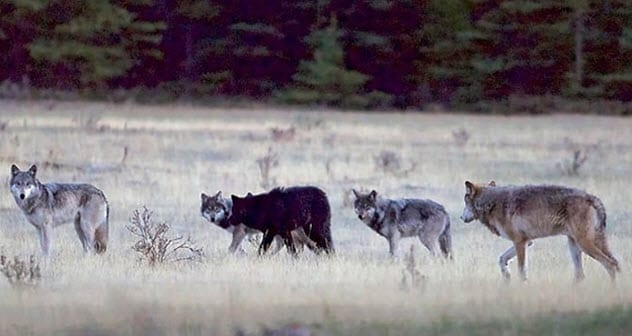
Banff, Canada, is a town that occasionally gets visited by wolves. While there are many regions of the world that would not tolerate this, Banff is part of a national park. The national park authorities have ensured that the wolves and people can live together without issue. When wolves make a kill, the surrounding area is closed off so that the wolves can enjoy the feast free of human interruptions.[7]
The wolves are seen as an asset rather than a threat, and this attitude of cooperation has helped to avoid conflict with people. Perhaps the wolves understand that they are not unwelcome. Despite the wolves coming into fairly close proximity to humans and even pets, incidents are still incredibly rare.
3 Lions In The Maasai Mara
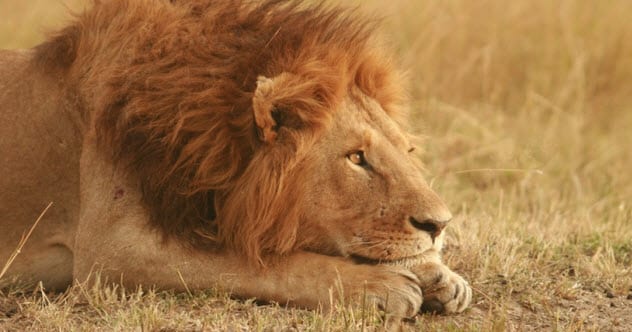
Maasai warriors traditionally killed lions as these animals would encroach on tribal territory and often kill livestock. Due to land development and poaching, lions are becoming more endangered and organizations worked with the Maasai to reduce the extra pressure on the lion population. Now, the Maasai warriors become Lion Guardians who protect the lions and carry out conservation tasks such as collecting DNA samples and tracking the movements of the lions.[8]
These lion-killers turned lion-saviors are now able to protect their livestock in different ways, allowing their ancient culture to continue with an incredible new twist: a symbiotic relationship with the king of the jungle.
2 Sharks In The Solomon Islands

It’s not every day that you get to look a shark in the eye—unless you are a spearfisher on Owarigi Island in the Solomon Islands. In the course of their daily spearfishing trips, these tribespeople encounter sharks and swim close to them without a shark cage in sight. They have developed a way of using body language to communicate to the sharks that they are not threatening or tasty to eat, so the sharks do not attack.
Strangely, sharks are more in danger from humans than we are from them.[9] The demand for shark fin soup, popular in some countries, has led to some shark species becoming endangered. In fact, you’re actually more likely to win the lottery than get killed by a shark.
1 Bees Around The World
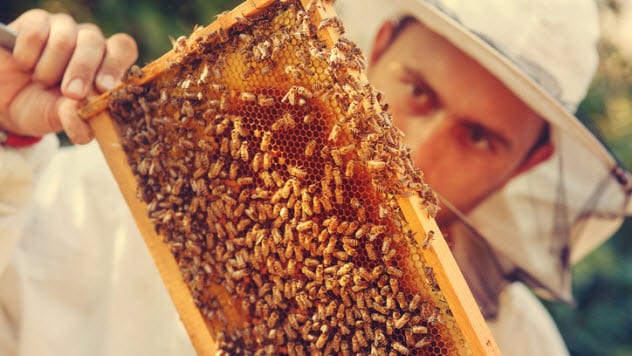
As an amazing cooperation between humans and animals, beekeeping is often underestimated for what it really means. For some people, a single bee sting can result in anaphylaxis and cause death quickly.
Even someone who doesn’t have an allergic reaction could be killed by an angry swarm of bees. There can be many thousands of bees in a swarm, and it only takes a thousand stings or so to start overwhelming the average person’s tolerance to bee sting venom. Yet, people trust and handle bees every day and share the bees’ honey without a thought.[10]
Don’t worry, though. Being killed by a swarm of bees and even having an allergic reaction to bee stings is incredibly rare. Then again, it’s still more likely than being killed by a shark!
I’m just a writer who likes weird animals, strange coincidences, and the idea that the future might be extraordinary.
Are dangerous animals lurking near your location? To find out, check out 10 Dangerous Animals Lurking In Your Backyard and 10 Surprisingly Dangerous Animals.








